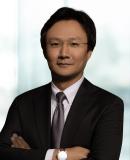BLOG -
Tit-for-Tat: Chinese investigations into imports of cognac and pork for EU duties on electric vehicle sales
The tit-for-tat exercise looks as if history repeats itself. However, with the EU automotive industry fearing the loss of hundred thousands of employment, the stakes are higher than in the past. The current investigation into subsidies will very soon pass a first milestone: the imposition of provisional anti-subsidy duties on imports of electric vehicles.
The investigation demonstrated, as far as we know, substantial help to the manufacturers in China, be it from the central government or local entities. This is apparent from the duty rates that were communicated prior to the publication of the European Commission’s findings and the formal introduction of duties; the publication of the provisional duties is expected before 4 July 2024.
The duties will certainly be a cause for further disputes between China and the EU. And as often, the interests of the 27 EU countries are not fully aligned. The investigation continues until November 2024, and until then, many efforts will be made to reduce frictions between the EU und China.
Will the history repeat itself? The European Union investigated solar panel imports from China starting in September 2012. The investigation concerned both dumping and subsidies, and was requested by the then EU producers of solar panels. The investigation into dumping looked at the price setting of the Chinese exporting producer between sales on its home market and for export. As China was then regarded a non-market-economy country, prices and costs on the Chinese home market were replaced by those in a so-called analogue country, at that time India. Dumping margins as high as 88 percent were found but the duty was lower because the European Union calculates also an injury margin and sets duties at the lower margin of both (different from e.g. the USA). The injury margin looks at by how much the prices must be increased so that the EU industry does not suffer injury. Additionally, the EU conducted an investigation into how much subsidies the Chinese solar panel producers had received from the state and other public entities, and calculated in the end a “combined” duty rate for both dumping and subsidies. In that procedure, China and the EU agreed on special treatment for the Chinese exports.
By way of comparison, the current investigation into subsidies for electric vehicles that are exported to the EU concerns only subsidies and was started by the European Commission on its own motion. The European Commission communicated its provisional findings but not yet the reasoning. According to the European Commission, subsidisation of Chinese electric vehicle production runs through the entire value chain, at local, provincial and national level. This begins with lithium sold at too low a price and extends to special financing concessions and tax breaks. According to the EU, it found case-specific subsidies for individual manufacturers and joint subsidies for all manufacturers. Only around 4 July 2024 will we know more details. The duties pre-disclosed are not in force.
In the investigation, the EU calculates anti-subsidy duty rates per cooperating Chinese exporting producer. Three producers were selected for individual examination, in a socalled sample. SAIC initially cooperated but then did not provide requested data. The EU then replaces missing data with best evidence, and this leads to the high rate of 38.1 percent. Anti-subsidy duties are in addition to the relatively low normal customs duty of 10 percent for car imports. The rate for BYD is 17.4 percent which means that BYD had received a quite substantial amount of subsidies in the reference period. The third company which participated in the investigation and provided company specific data, Geely, has a duty rate of 20 percent. These rates could change even before the formal adoption of provisional duties by way of publication in the Official Journal of the EU, as there could be calculation errors to be corrected. And the duty rates can change following further investigation in the next few months. The investigation must be finalized early November.
It is important to note that the duty rates of other electric vehicle producers depends on their position in the investigation: Cars manufactured and exported by Geely for its Volvo brand have the Geely rate. Other producers which wrote to the EU and cooperated in the investigation but were not selected for the sample, receive the weighted average duty which is 21%.
This applies to Tesla’s exports to the EU, as well to Aiways, JAC, BMW, Chery, FAW, Changan, Dongfeng, GWM, Leapmotor, Nanjing Golden Dragon Bus, Nio, and Xpeng. Tesla wants an individual duty rate, but it remains to be seen whether they receive one. All other exporters are subject to the highest duty rate of 38.1 percent.
The importers in the EU do not have to pay the provisional duty upfront but can offer bank guarantees and the like. Once the investigation will be concluded, the duties will be definitively calculated and collected.
As regards the issue of the collection of retroactive duties, this issue will be decided together with the decision on the definitive duties.
The tit-for-tat between the EU and China started with the investigation into exports of Cognac and then most recently of pork products. We have seen this before. Suffice to say that there is ample time between now and November to find an outcome of the investigation that does not result in anti-subsidy duties.
Experts

|
Dr Christian von Wistinghausen Rechtsanwalt, LL.M. Partner |
|
|

|
Lelu Li Rechtsanwältin Partner |
|
|

|
Wenyu Zheng Rechtsanwältin |
|
|

|
Lukas Yu LL.M. |
|
|

|
Prof. Dr Rainer Bierwagen Rechtsanwalt Partner |
|